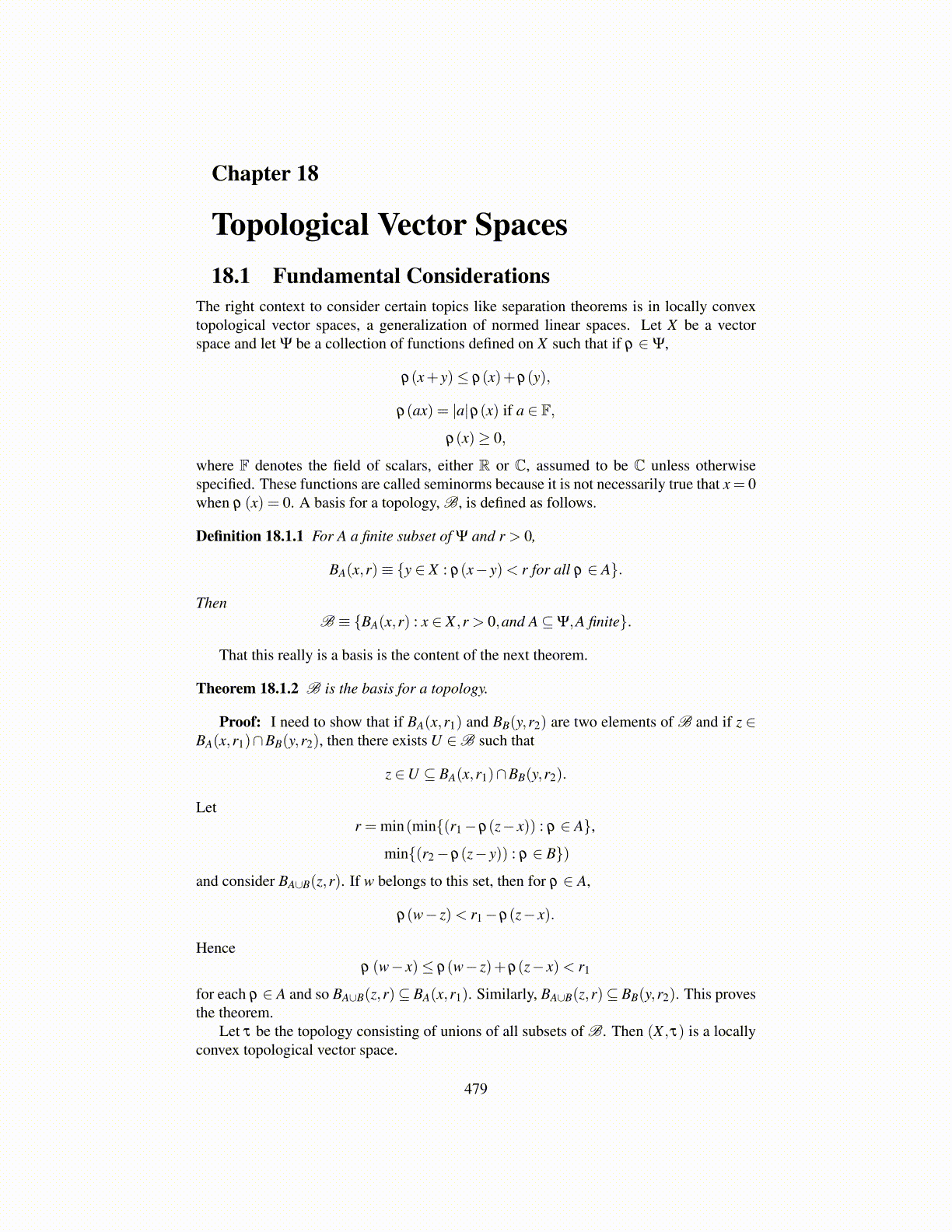
Chapter 18
Topological Vector Spaces18.1 Fundamental Considerations
The right context to consider certain topics like separation theorems is in locally convextopological vector spaces, a generalization of normed linear spaces. Let X be a vectorspace and let Ψ be a collection of functions defined on X such that if ρ ∈ Ψ,
ρ(x+ y)≤ ρ(x)+ρ(y),
ρ(ax) = |a|ρ(x) if a ∈ F,
ρ(x)≥ 0,
where F denotes the field of scalars, either R or C, assumed to be C unless otherwisespecified. These functions are called seminorms because it is not necessarily true that x = 0when ρ (x) = 0. A basis for a topology, B, is defined as follows.
Definition 18.1.1 For A a finite subset of Ψ and r > 0,
BA(x,r)≡ {y ∈ X : ρ(x− y)< r for all ρ ∈ A}.
ThenB ≡ {BA(x,r) : x ∈ X ,r > 0,and A⊆Ψ,A finite}.
That this really is a basis is the content of the next theorem.
Theorem 18.1.2 B is the basis for a topology.
Proof: I need to show that if BA(x,r1) and BB(y,r2) are two elements of B and if z ∈BA(x,r1)∩BB(y,r2), then there exists U ∈B such that
z ∈U ⊆ BA(x,r1)∩BB(y,r2).
Letr = min(min{(r1−ρ(z− x)) : ρ ∈ A},
min{(r2−ρ(z− y)) : ρ ∈ B})
and consider BA∪B(z,r). If w belongs to this set, then for ρ ∈ A,
ρ(w− z)< r1−ρ(z− x).
Henceρ (w− x)≤ ρ(w− z)+ρ(z− x)< r1
for each ρ ∈ A and so BA∪B(z,r)⊆ BA(x,r1). Similarly, BA∪B(z,r)⊆ BB(y,r2). This provesthe theorem.
Let τ be the topology consisting of unions of all subsets of B. Then (X ,τ) is a locallyconvex topological vector space.
479